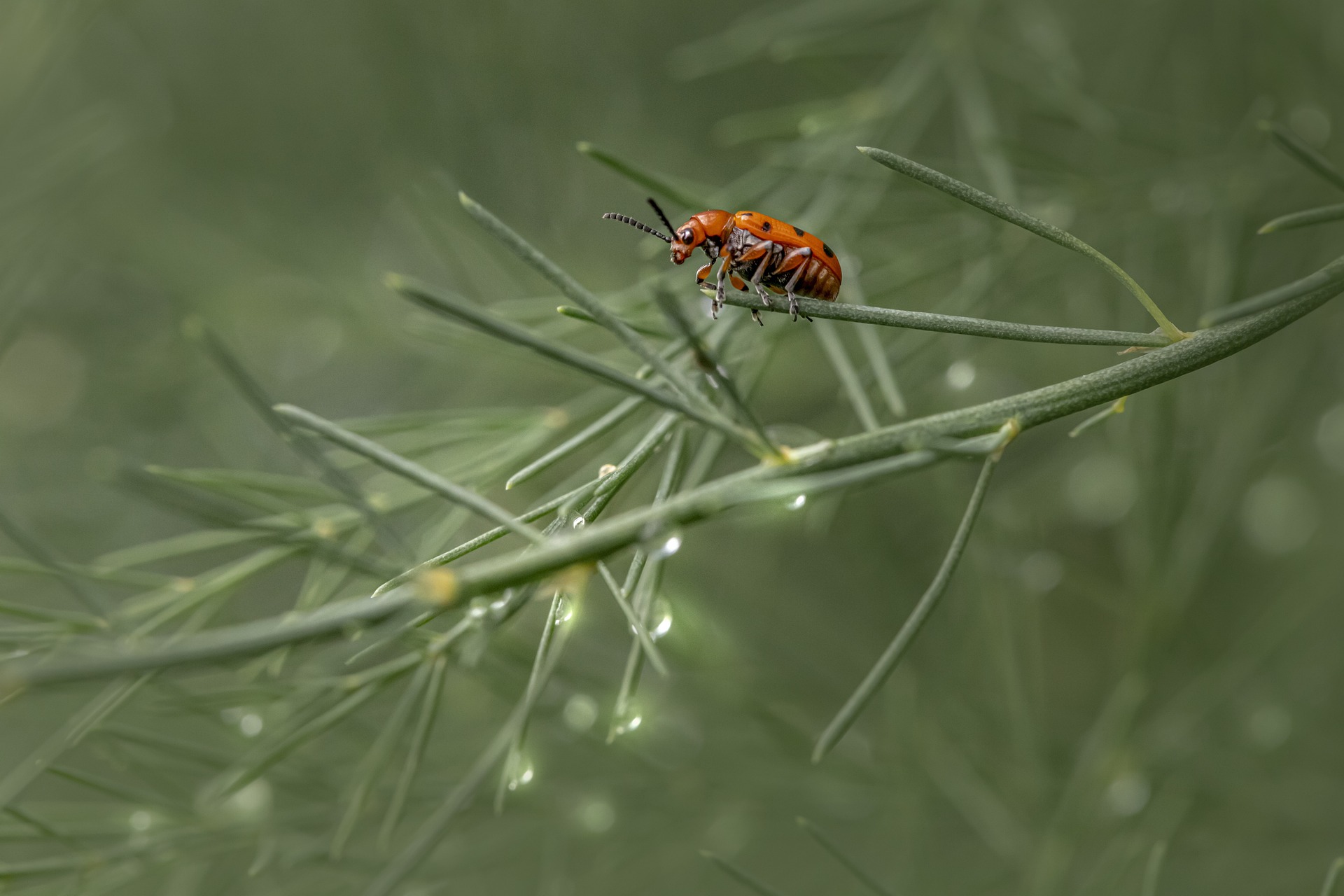The Spotted Asparagus Beetle (Crioceris duodecimpunctata) is a notable pest species, primarily affecting asparagus plants. Here is an overview of its characteristics, life cycle, and impact on agriculture:
Appearance:
- Size: Adult beetles are small, measuring about 5 to 6 millimeters in length.
- Coloration: They have a distinctive bright orange-red color with twelve black spots on their wing covers (elytra), giving them their name.
- Body Structure: Like other beetles, they have a hard exoskeleton, and their bodies are elongated and slightly rounded.
Habitat:
- Preferred Habitats: Spotted asparagus beetles are primarily found in asparagus fields. They thrive in areas where asparagus is cultivated, as it is their main food source.
- Geographic Range: This species is native to Europe but has spread to other regions, including North America, where asparagus is grown.
Behavior:
- Feeding: Both adult and larval stages of the Spotted Asparagus Beetle feed on asparagus plants. Adults consume the foliage, while larvae primarily feed on the berries (fruits) of the asparagus plant.
- Flight: Adults are capable of flight and can move between plants, especially during the growing season when they are most active.
- Activity: They are most active during the asparagus growing season, typically from late spring to early summer.
Life Cycle:
- Eggs: Females lay eggs on the spears and berries of the asparagus plant. The eggs are small, oval, and orange in color.
- Larvae: After hatching, the larvae feed on the asparagus berries. They are white or cream-colored with a brown head and grow to about 7 millimeters in length.
- Pupation: Larvae drop to the ground to pupate in the soil. The pupal stage lasts for about two weeks, after which adult beetles emerge.
- Adults: Adults emerge from the soil and continue feeding on the asparagus plants, completing their life cycle.
Impact on Agriculture:
- Damage: The feeding activity of both adults and larvae can cause significant damage to asparagus crops. Adult beetles create holes in the foliage, which can weaken the plant, while larval feeding on berries reduces seed production and quality.
- Economic Importance: Heavy infestations can lead to substantial economic losses for asparagus growers due to reduced yield and quality of the crop.
Management and Control:
- Cultural Practices: Crop rotation and removing plant debris after harvest can help reduce beetle populations by eliminating breeding sites.
- Biological Control: Natural predators, such as certain species of parasitic wasps, can help control beetle populations.
- Chemical Control: Insecticides can be used to manage heavy infestations, but should be applied with caution to minimize impact on beneficial insects and the environment.
- Monitoring: Regular monitoring of asparagus fields during the growing season can help detect early infestations and allow for timely intervention.
Interesting Facts:
- Host Specificity: While they can occasionally feed on related plants, Spotted Asparagus Beetles are highly specialized and primarily depend on asparagus for their life cycle.
- Invasive Potential: In regions outside their native range, such as North America, they are considered an invasive species due to their impact on asparagus cultivation.
In summary, the Spotted Asparagus Beetle (Crioceris duodecimpunctata) is a small but significant pest of asparagus crops. Its distinctive appearance and feeding habits make it a concern for growers, necessitating careful monitoring and management to minimize damage and economic losses.
Visited 878 times, 4 visit(s) today
Views: 1403
Subscribe to the newsletter:
